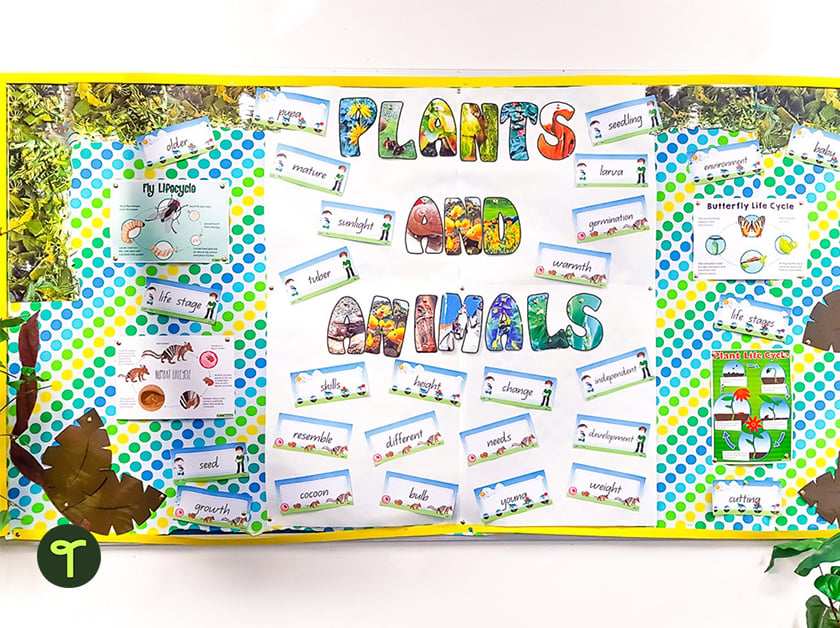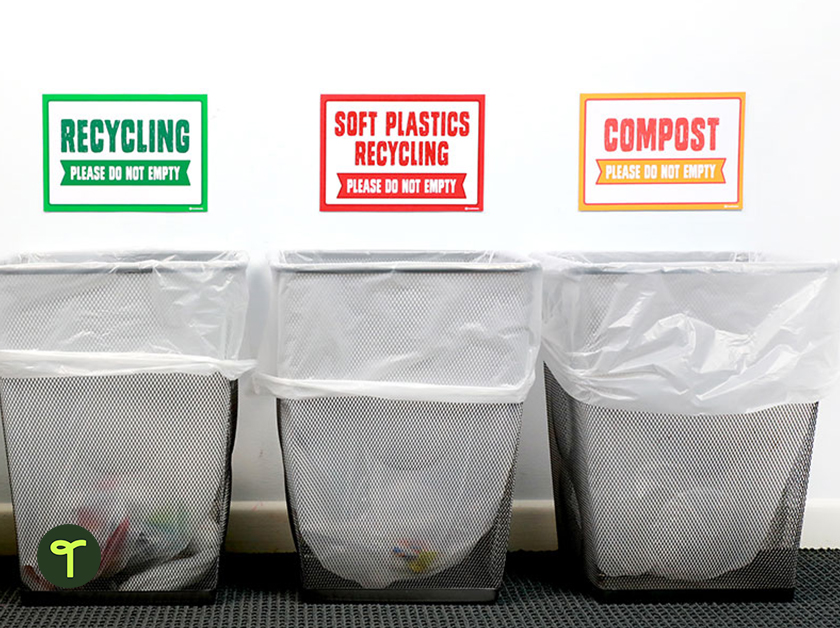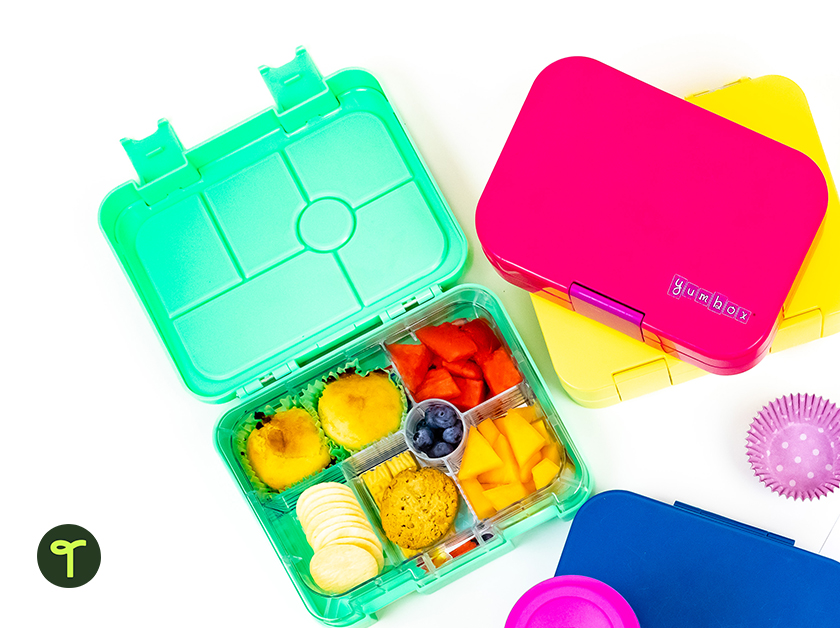It’s no secret that teaching the values and principles of sustainability are an integral part of every modern-day classroom. Sustainability activities and sustainable practices that get your students thinking about the planet are a great way to raise awareness of the environment and its needs. But how do you maintain a sustainable classroom and role model those important practices for your students, especially with all you’ve got on this school year already?
Have no fear! The teachers at Teach Starter are here with our favourite tips to create an energy-efficient and waste-wise classroom that will go a long way in embedding sustainable thinking in your students’ minds.
Short on time and just need some activities? Skip straight to our Sustainability Teaching Resources!
Easy Sustainable Practices for the Classroom
1. Create a Classroom Compost Center
Helping the environment at school doesn’t have to mean leaving the classroom. It can start with dumping the grounds from your classroom coffee pot and student lunch leftovers into a class compost bin. You can use the natural scraps from your students’ lunches to create compost to nourish your school’s gardens, or find out if there’s a community garden nearby that would take it off your hands!
If your school is lucky enough to have an agriculture department or chook shed, they would be the perfect place to take your unwanted food scraps. They may pay you back with some lovely eggs!
Here’s all you need to get started:
Get a compost bin.
To start things off, you’ll need a compost bin for your students (and you) to fill with scraps that can be turned into compost. If this composting project will remain in the classroom rather than being set up somewhere outside on school grounds, a simple plastic tote will do the trick, or you can try a composter that’s designed to be used inside.
Teach Starter Teacher Tip: While it’s tempting to purchase a see-through bin so your students can watch their food waste break down, it’s best to stick with something that’s opaque as darkness will help with the decomposition process. You’ll also want to purchase a bin that has a lid to prevent the bin from attracting pests and reduce any smells escaping into the classroom.
Add holes.
Although your bin should keep your waste nice and dark for breaking things down, ventilation is key! If you opted for a plastic tote, rather than a bin specifically created for composting, you’ll need to drill holes around the top of your bin to allow for airflow.
Educate your class on what can be composted.
Students will need to know what sort of organic waste can be popped in the bin, and what should go in your recycling or rubbish bins. You can print and hang classroom reference posters that remind students what can be composted and what can’t.
Looking to set up your own classroom compost center? Woolworths and Landcare Australia has a composting grant for primary schools to make it easier! Located in Queensland? Brisbane City Council has set up a fabulous Community Compost initiative. They’ll even give you a kitchen (or classroom!) caddy.
2. Enforce (and Role Model) Recycling
This is another sustainable practice that will help the environment right from your classroom! Make recycling mandatory — you can add it to a classroom contract — and practise it yourself, so students see you regularly pitching your paper into the recycling bin or adding your leftover cardboard boxes to the pile for the custodial staff to tote to the recycling center.
The more it becomes a habit when they’re young, the more likely they are to continue this sustainable practice into the future.
To really drive home why recycling is important, try this Mass Maths Investigation – How Much Do We Throw Away?
3. Refill Your Whiteboard Markers
Did you know that in Australia alone, there are around 40 million whiteboard markers thrown out by schools, universities and other learning institutions each year? If you hate the thought of throwing away so much plastic each term, try refillable whiteboard markers! They even use recycled plastic for the pens and double sided nibs for when they’re getting a bit sad and tired.
4. Hold an Energy-Free (or Energy-Light) Day
You may already participate in Earth Hour in March, but what about extending it to the rest of the year? Challenge your students (and yourself!) to go without power for a school day, or maybe just a half day if a whole day won’t work.
This environmental education activity will quickly draw your students’ attention to the plethora of items they use at school that require energy. Lights, calculators, computers, iPads, interactive whiteboards and air con are all out for the day!
In the days leading up to your energy-free time, poll students to contribute ideas about how they can complete each of their regular lessons without the consumption of energy.
5. Hold an Energy Audit
Speaking of energy-savings, have you done an audit of just how much you and your students are using in the classroom? According to the Clean Energy Council, the average Australian classroom uses about 3800 kWh of electricity per year — that’s half the consumption of an average Australian household!
While technology certainly has made our lives easier, if not used responsibly it will leave a big carbon footprint on the Earth. Teach your students about energy emissions and then follow up with a Classroom Energy Audit to find places you can realise energy savings throughout the school year. This is a great way to empower students to:
- observe the lighting, heating and cooling, and appliances in your room
- investigate your room’s electrical usage
- suggest actions to reduce your energy consumption
Teach Starter Teacher Tip: Print an energy audit guide to get students started! After students have completed their audit, why not assign a classroom helper the task of making sure the lights are off any time your class leaves the room?
6. Dig Into the Lunchbox
Running a lunchbox audit with your class can once again help students connect their real-world actions with the environmental impact they have as individuals! This kind of exploration goes a long way toward encouraging children to think about their own consumption with a more global and sustainable perspective. This activity could be extended for older students as a STEM task. Students can explore the production, packaging, and disposal stages of a food item’s life, as well as develop and present a proposal for more sustainable design options for production, packaging, or sale.
Looking for parent buy-in? Share this list of options in your next classroom newsletter to update parents on their children’s sustainability progress:
- Use reusable packaging, such as beeswax lunch wraps, reusable pouches, and fabric lunch baggies.
- Eat more fruit and vegetables and food that doesn’t require packaging.
- Fill small containers repeatedly with snacks from larger packets.
- Use a reusable lunchbox with compartments to prevent cross-food contamination.
- Reuse plastic cling wrap and foil when possible.
- Use reusable cutlery sets.
Another fun idea from a member of our teacher team? Have a ‘Nude Food Day’ where the objective is for your class to have a completely waste-free lunchbox for a day!
7. Get (Free) Help With Your School Supply Waste
You may already have a PlanetArk box for recycling your printing cartridges or paper — or maybe now’s the time to get one! For the rest of your deceased stationery, TerraCycle provides a handy disposal system that allows you to recycle pencils, markers and more classroom supplies. Seems silly not to, doesn’t it?
8. Make the Switch From Plastic
Do an assessment of your art cupboard — and your own food. Can you switch plastic cups and straws for paper ones? It’s an exSTRAWdinary thing for the environment when you can switch to biodegradable or paper straws for your craft activities!
9. Use Fabric to Back Your Displays
This is a terrific way to keep your classroom visually fresh without wasting poster paper. You can usually find an amazing array of patterned materials at a textiles shop, or if you’re after a more simple canvas, grab a large flat sheet for cheap from your local second-hand store.

10. Weigh in on Water Conversation
Do you have a sink in the classroom? Talk about water waste early in the school year, and add visual reminders to ensure students tighten the faucets went they’re done washing their hands. Talk to the janitorial team about posting similar reminders in the school bathrooms so everyone can do their part to help the environment at school.
You’ll have your students turning off the taps, reporting leaks and flushing with a half flush in no time! Don’t forget to empty your drink bottles into the garden at the end of the day to make the most of every drop!
11. Make Personal Touch Pencil Pots
Pencil pots are another necessity that can do their part for the environment in a sustainable classroom!
Sterilise and repurpose milk cartons or tin cans for pencil pots. Get your students to decorate them for a fun beginning-of-year activity as a way for them to put their own personal touch on the classroom. Make a note to check the cans for sharp edges before handing them over to their designers!
12. Reach Out To Your Community
Do you have parents who are often putting their hands up to help out? Why not ask them to scavenge around at home and donate anything that could be useful in your classroom? Pre-loved books are a great way to flesh out your school library, and disused costumes and clothes (washed of course!) are wonderful for any early years classroom’s dress-up corner or to have on hand in case of an accident or mess.
Here are some other secondhand items that you would find make invaluable contributions to your room:
- furniture
- old technology, such as telephones, typewriters and record players
- used board games and puzzles
- cooking utensils
- toys
- cushions (again, washed!)
- art and craft paper and cardboard for modelling and craft work
- take away containers, old paper ream boxes, and pringles jars to store equipment.
Trash cans truly become treasure! Old items from home make a great source of evidence for a Past and Present unit of inquiry.
[resource:160182][resource:151696][resource:160323]
Be careful that you are very specific about your requirements when requesting these items from parents. You don’t want to become the local second-hand drop off store! Try to make sure you have a purpose for everything that gets brought in — parents love to see when something they’ve contributed has been put to good use. And don’t forget to ask them for suggestions. They may have something that you’ve not even considered yet!









4 Comments
No comments yet.